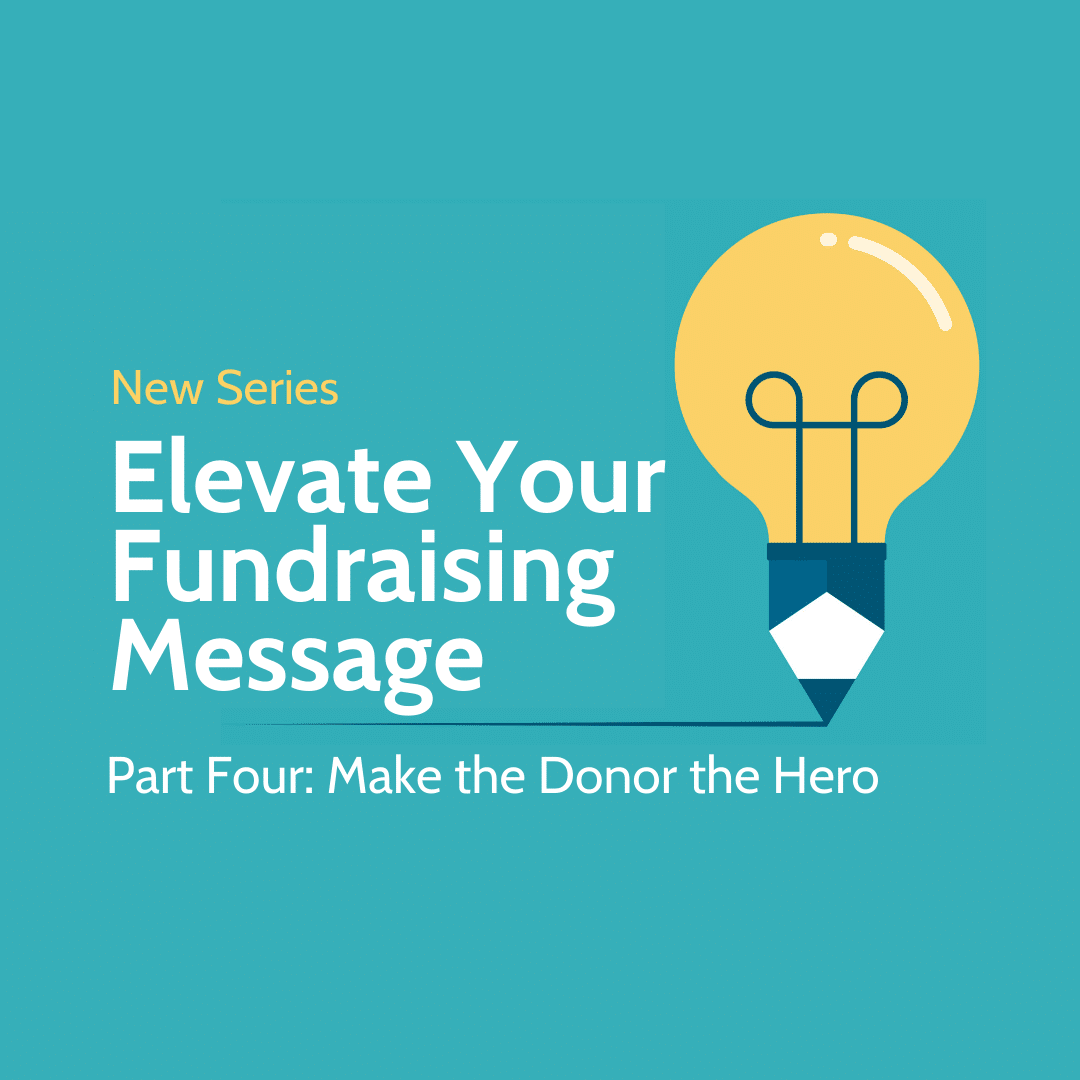Series Note: Recently, I had the opportunity to observe the donor messaging of a small, community nonprofit in the Midwest. I noticed four common issues in their messaging at this nonprofit that plague many others. In this four-part series, I will share four fail-safe strategies for elevating the impact of your donor messaging.
Click below to catch up on Brent’s series
Part One: “Ratchet up the Emotion“
Part Two: “Focus on Impact“
Part Three: “Emphasize the Urgent Need“
It is surprisingly common to see nonprofit messaging that is all about the organization. This messaging uses lots of words like “our,” “we,” and “us.” The focus is on the needs of the agency, the plans of the agency, and the dreams of the agency. I call this belly-button thinking.
Donors respond better to messages that position them as the hero instead of the organization. To do this, switch the focus in donor communications from your agency to your donor. For example, your current donor page might say something like this:
Make a Donation
We are an all-volunteer organization, which means we do not have a paid staff dedicated to seeking funding. This means that every donation means so much to us. The generosity of our donors is what keeps us giving back to our community, revitalizing our region one family at a time.
Here is a more donor-focused approach to the same text:
Make an Impact
Your generous gift is critical to helping region’s neighbors be warm, safe, and dry. Your donations make a more direct impact on lives because we are an all-volunteer organization. Will you give a financial gift today to ensure five families receive home revitalizations in 2020? Thank you!
There are several differences between these two statements that are notable.
- The pronoun “you” pops up three times. “You” is a simple little pronoun with a big impact. Using it engages the donor and communicates that they are important.
- It is not enough to just say “you.” Instead, that “you” needs to be connected to community transformation. Thus, the donor is tied to an action they can engage in.
- There is a clear ask for a financial gift. Now, if this piece was a major donor offer—versus something for the broader public—you would want to exchange financial gift with a dollar amount. For example, “Will you give a very generous gift of $3,000 to ensure that one family receives a home renovation in 2020?” Regardless, it is clear what the donor is asked to do.
It is hard to go wrong when you make the donor the hero. Connecting their generosity to changed lives is a combination that will always be a winner for both you and the donor.
Are you ready to elevate your fundraising message through donor communications? We can help! Contact us today to learn how we can help you take your messaging to the next level and make a lasting impact for your mission.


